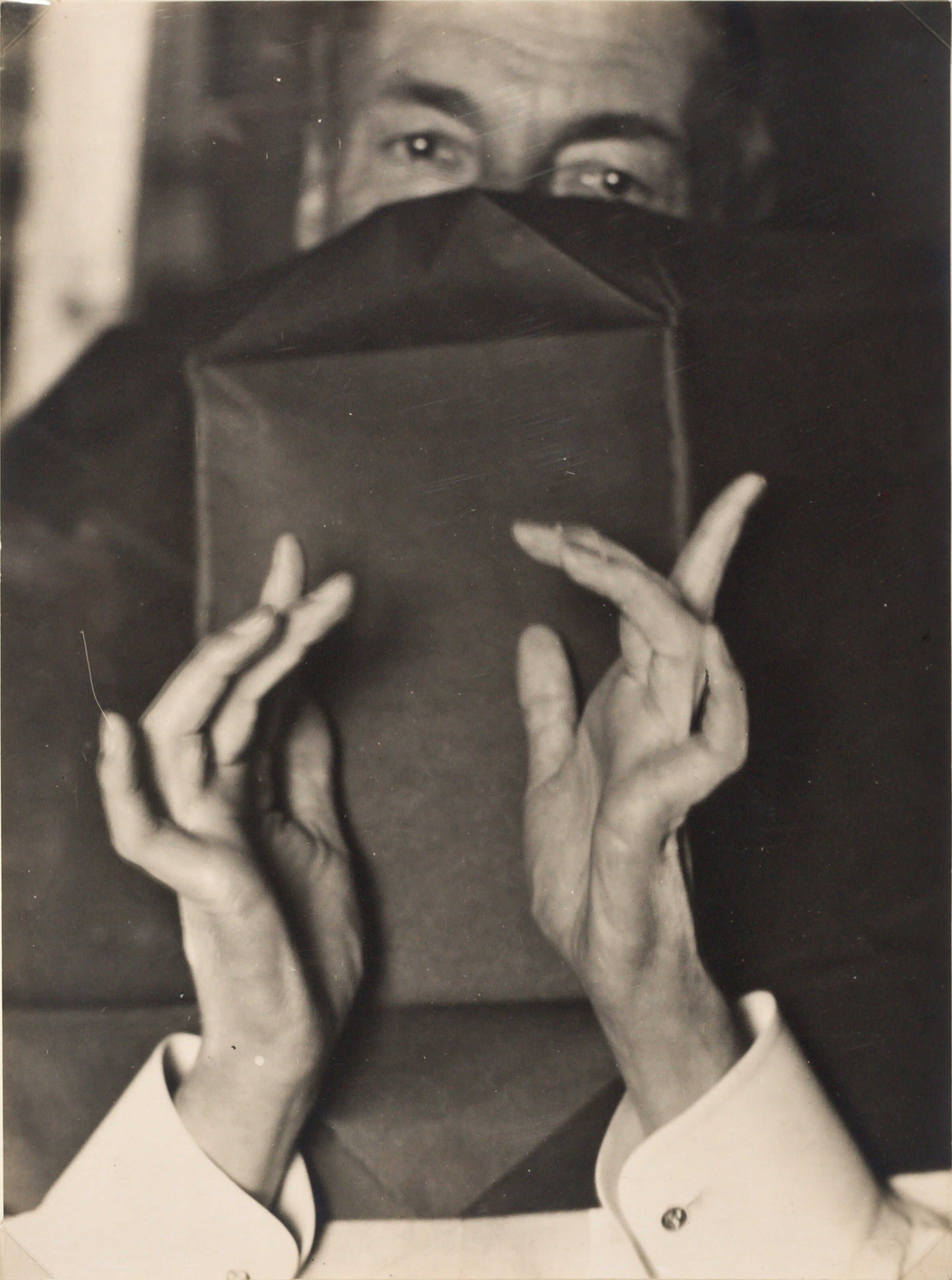Harry Melvill (Russel H. Greeley?)
Man Ray
c. 1925
Gelatin silver print
22 x 16 cm
Acquisition year 1996
Inv. 0138
Catalogue N. A131
Provenance
Bibliography
The screen behind which Melvill hides appears to have a further meaning, at least for Cerruti. It looks, in fact, like paper used to wrap a book, a small painting or even a photograph.
A leading member of the Dada and Surrealist movements, Man Ray was a painter, a creator of ready-mades and avant-garde films, and an ally of Marcel Duchamp in numerous projects as well as an insatiable experimenter in the field of photography. Purchased in 1996 at the auction of his widow’s collection, this rare print (only four other copies of which are known, one in the Philadelphia Museum of Art) is probably a portrait of Harry E. Melvill (1866-1931), a lawyer who studied at Oxford and played a lively part on the social and artistic scene in London and Paris at the turn of the century. Close to Oscar Wilde and Jean Cocteau, and part of the group of British expatriates that revolved around Olga Caracciolo de Meyer and her villa in Dieppe, he worked for the British secret service during World War I and had a long affair with the actor and playwright Cosmo Gordon-Lennox.
In this late photograph, taken around 1925, his face is mostly concealed and attention is focused on his long, slender hands. The odd prominence given to the hands and their position is discussed in the catalogues of the Sotheby’s auctions (2004, 2014) at which another copy of the photo appeared twice. Was Melvill perhaps miming the action of taking a photo? Or was the act of concealment an allusion to hissecret life as a spy or a homosexual? Without indicating the source, the catalogue of 2004 also suggests that the hands might actually belong to Jean Cocteau. This interesting possibility would connect Harry Melvill with another far more famous work by Man Ray, namely the photograph of Rrose Sélavy, Duchamp’s female alter ego, taken a few years earlier (c. 1920-21), where the hands of Germaine Everling, Francis Picabia’s mistress, appear in a very similar pose by the fur collar. Are we therefore faced with a parody of the famous photograph and Duchamp’s counterpart in drag? Is some hidden comment being made by two gay intellectuals on a cross-dressing heterosexual artist?
Whatever the meaning may be and regardless of whose hands they actually are, it is interesting to note the prominence given to these long, slender fingers also in the early portrait of Melvill by Jacques-Émile Blanche (1904, Oxford, University College). The connection with Blanche brings us in turn to an extraordinary link between this photograph and another item of the Cerruti Collection that may well have prompted its purchase (Harry Melvill being the only photograph the collector ever bought). We refer to a copy of the first edition of Marcel Proust’s Du côté de chez Swann (Paris, Bernard Grasset, 1913) previously owned by Melvill and bearing an extraordinary dedication by the author in which he mentions Blanche, who portrayed them both (the painting of Proust is now in the Musée d’Orsay).
The screen behind which Melvill hides appears to have a further meaning, at least for Cerruti. It looks, in fact, like paper used to wrap a book, a small painting or even a photograph. In this way, Harry Melvill plays a precise part in the music room of the villa, beside two other portraits of tall, slender male figures associated with books: Pontormo’s Portrait of a Gentleman with a Book and Gloves (1540-41) and Dosso Dossi’s St Jerome in the Wilderness (c. 1528).
A recent Christie’s catalogue (2016) casts doubt on the subject of the photograph. It is Russell H. Greeley (1878-1956), mentioned on the back of the copy offered for sale at auction, from whose bequest it came. Heir to the wealthy family from Boston who had founded the New York Tribune, Greeley was the owner of the Château de Clavary in Auribeau-sur-Siagne, where Man Ray was a frequent guest in the 1920s and 1930s.
Pietro Rigolo
